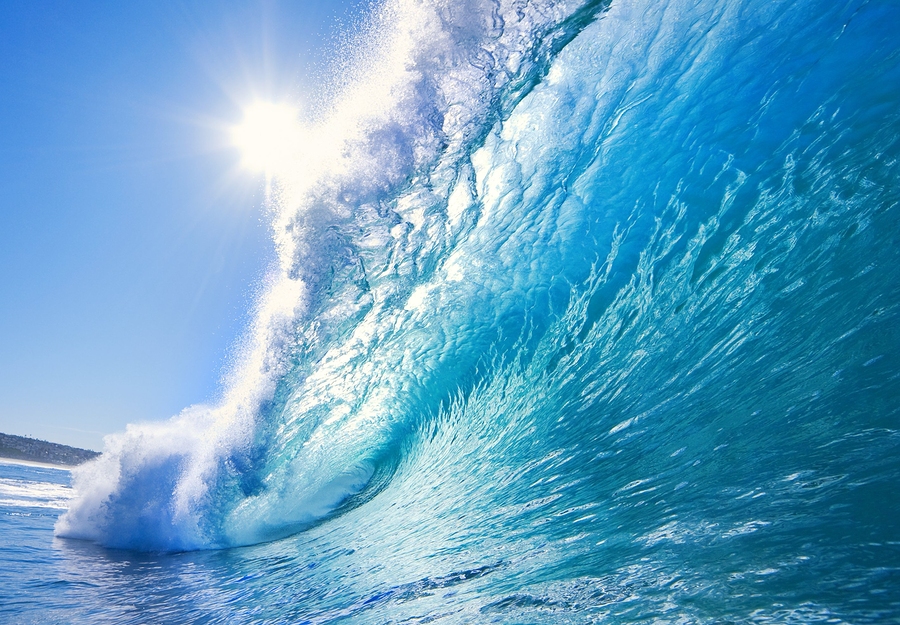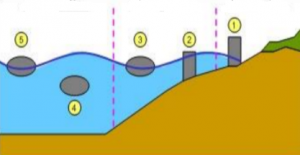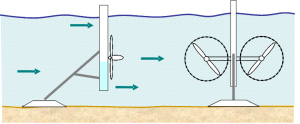
Ocean Energy, the big unknown
Despite well-known wind and solar energy, hydraulic energy has also contributed in terms of developments in the sector. In this article, we will enter the world of hydraulic energy, more specifically in ocean energy.
In the field of renewable energy everything happens very slowly, so it is usual for forecasts to be very long term. In this case we talk about the year 2060, when it is expected that 100% of the energy generation will be carried out through renewable resources.
What is the oceanic energy?
Also called wave energy, ocean energy is that which is obtained thanks to the movement generated by the tides. It is a renewable energy with great future projection because 70% of the planet is formed by water, and of these, 97% comes from seas and oceans.
Types of ocean energy
1. Olamotor Energy
Also called wave energy, it is the energy that comes from the mechanical energy generated by the movement of the waves. It is estimated that about 70% of the electricity generated in the US in 2017 comes from wave energy. These data present a fairly optimistic future for the sector and it is expected to be one of the great energy revolutions in the coming years.
Depending on the depth of the devices, we have 3 types:

(1) On-shore devices that are integrated in breakwaters or at the bottom of shallow water.
(2 and 3) Near-shore devices that are supported (2) or floating (3) in shallow water (10-40m).
(4 and 5) Off-shore devices that are located off the coast and can be found on the surface (5) or submerged (4) up to 100m deep.
2. Marine current energy
The energy of marine currents is a type of energy that is obtained by harnessing the kinetic energy of marine currents, as the name implies. Although it is not a very exploited type of energy, it has the advantage of being more predictable than wind and sunlight.

Marine currents are basically generated by the rise and fall of the tides, which are related to the gravitational interactions between the earth, the moon and the sun. Taking that into account, the kinetic energy that is obtained through the tides is transformed into electricity in the same way that wind energy is obtained through the wind: thanks to turbines.
Its main disadvantage is the price, and this is reflected in the $ 0.66 that it costs to produce each kWh of electricity, compared to the $ 0.20-0.30 that it costs to produce through wind energy. This does not have to be bad news, it just implies that it is not a resource available to all countries. In the US it is not a very profitable energy, but in the power station in South Korea, in Sihwa specifically, the dimensions of the power plant allow this type of energy if they are profitable. The key, as always, is to adapt to the resources available to each country.
3. Oceanic thermal energy
Also called tidal energy, it is produced by the differences between deep (cooler) and superficial (warmer) ocean waters that have the ability to move a thermal machine and produce useful work in the form of electricity. Because each ocean has its own temperature, the most interesting geographical areas to exploit this energy are those found in the equatorial tropical zone, since it is the area where the temperature differences are greatest.
Among its main advantages is that it is inexhaustible, renewable and does not emit greenhouse gases, as well as the fact that the amount of energy accumulated in the surface layers of the ocean has the ability to meet the energy needs of much of the population. As always, its greatest disadvantage is the high costs of tidal plants and the fact that they cannot be located in any area, but in those where the temperature variation throughout the year is 20ºC.
4. Osmotic energy
Osmotic energy, or blue energy, is what is obtained by the difference in salt concentration between seawater and river water and has great potential in those regions that have large rivers, such as the Netherlands.
Currently, this process can be carried out through two processes:
- Reverse electrodialysis (RED) that involves creating salt batteries where the ions that will generate the energy are transported.
- Pressure-delayed osmosis (PRO) that involves pumping fresh water into a chamber full of seawater, generating an increase in pressure that turns the turbine.
This is probably the method of generating energy that has less information available and it will be necessary to wait a few years to be able to analyze correctly the data that the investigations give off.
Conclusions
Although investments in renewable energy platforms have increased in recent years, ocean energy does not have as much recognition as its sisters, wind and solar. To a large extent, this is due to the investment involved in developing such innovations, which, not only involve large sums of capital, but are limited to certain geographical areas that have an adequate coastline.





